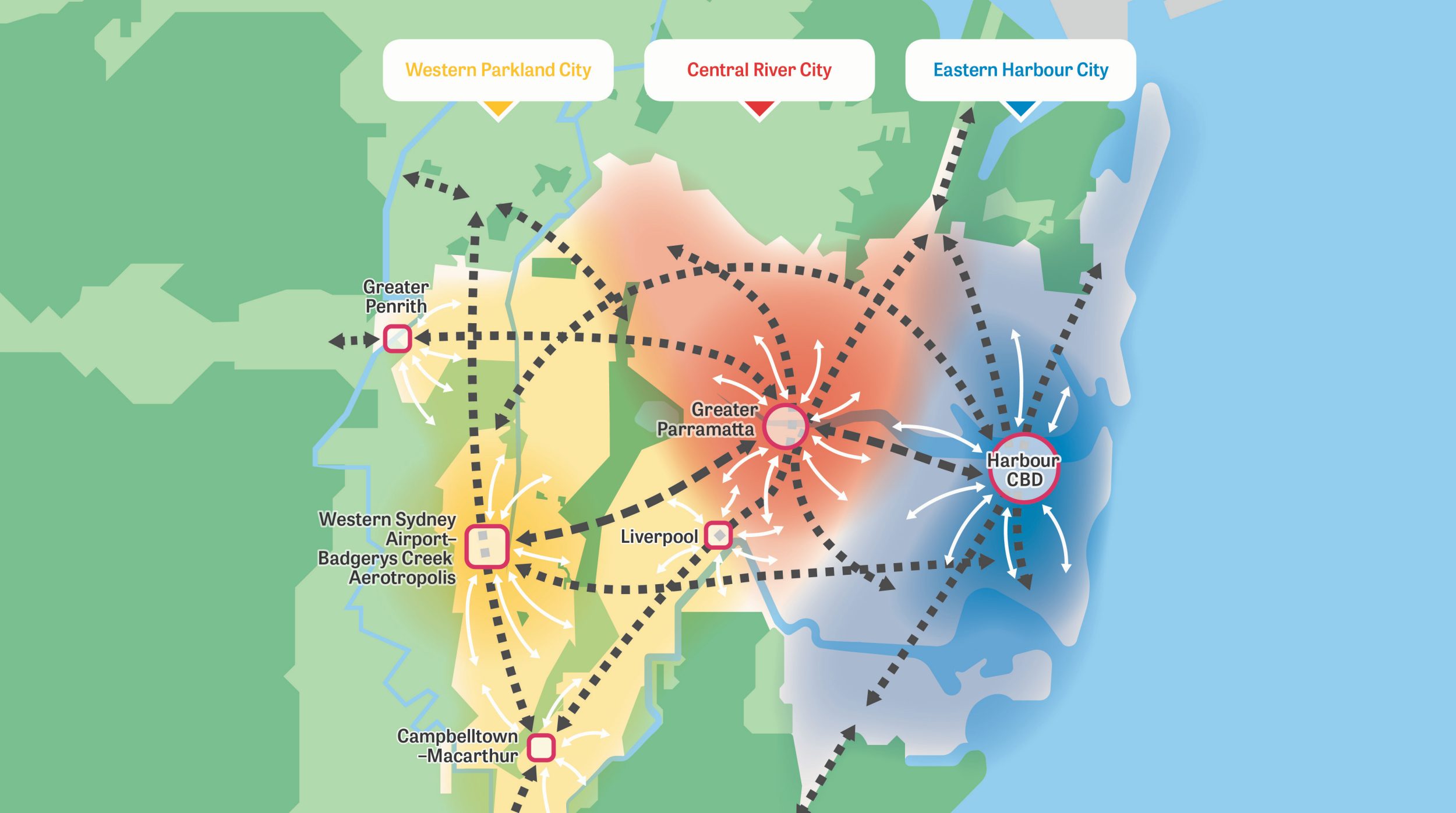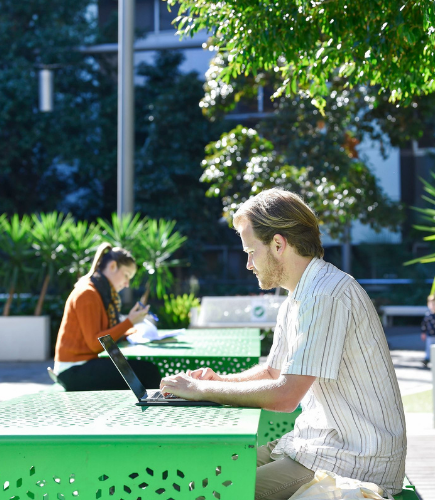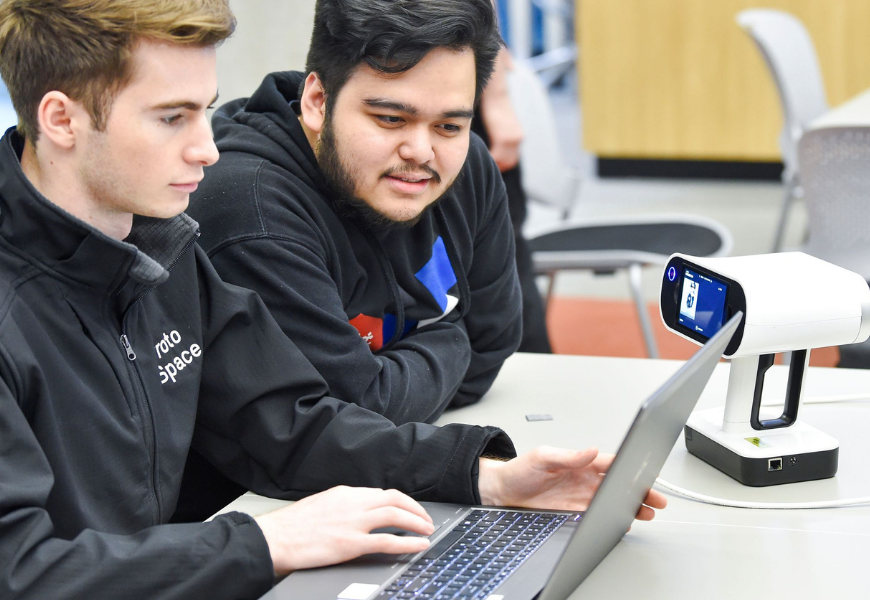Creating, planning and connecting great cities
To create great cities across Australia, we need to plan great cities.
So, as the digital backbone of the nation, it is critical that we work with the nation’s development and city planning organisations to ensure the social and economic opportunity made possible by broadband can be fully realised by all Australians.
Recently, I had the pleasure to address the Greater Sydney Commission and reflect upon the important plans they have developed to make the nation’s most populous region more productive, sustainable and liveable.

To do this, the Greater Sydney Commission has developed plans for a Metropolis of Three Cities where most residents live within 30 minutes of their jobs, education and health facilities, services and great recreational places, and dining and entertainment precincts.
These plans – which have connectivity at their core – are both exciting and a great opportunity for the nbn™ network and the nation, because with greater connectivity and access comes greater opportunities for businesses and sectors like health, tourism, agriculture and education.
Investing in our network
Last year, we unveiled the next evolution of the nbn™ network through $4.5 billion worth of investments to extend the reach and capability of this critical infrastructure asset to more Australian homes and businesses.
This blueprint is designed to enable the nbn™ network to meet the evolving digital needs of the nation by aiming to make our highest wholesale speed plans accessible to up to 75 per cent of premises in our fixed-line network by 2023.
Designs have been drawn and we have identified and allocated contracts to our Delivery Partners to commence work to pass the first 200,000 premises in the Fibre to the Node network that will become eligible for Fibre to the Premises access technology to support higher wholesale speed tiers.
Many homes and businesses throughout Greater Sydney will be among the first in the nation to benefit from these investments.
In fact, more than 26,000 premises in suburbs including Castle Hill, Liverpool, Holsworthy and Wetherill Park have been included in the first and second tranches of our plans.

Seizing the benefits of broadband
While this plan will extend fibre deeper into our network, to ensure millions of homes and businesses can access plans based on the fastest wholesale speed tiers we have available, it has also driven us to rethink how we can serve our communities better.
We know that access to fast, reliable and secure broadband kept the nation connected through the challenges of COVID-19, but it has also triggered profound changes in consumer and business behaviour.
As the first COVID-induced lockdowns swept across Australia, anyone who was in the fortunate position to be able to work from home, could work from home offices, seemingly overnight.
This seamless shift to remote working has served as an example for how other important areas – including the broader economy, our cities, our family structures, our values and even our politics – must now adapt to the rapid digitisation touching every part of our society.
The changes brought on by the digitisation of the economy will, of course, create significant challenges for our traditional workforces; how we collaborate with each other; and how cities will be designed now and into the future.
But there are also clear benefits to be seized.
As we embrace a more digital economy and the lifestyles it enables, there will be flow-on effects to real estate prices as demand for our coastal cities migrates to other regions.
We are already seeing this play out with house price growth in regional areas, particularly those areas within striking distance of the major capitals, such as the New South Wales Central Coast, Victoria’s Mornington Peninsula and Queensland’s Sunshine Coast and Gold Coast eclipsing the price growth of their capital city neighbours. The nbn™ network is the great enabler that is helping make it possible for those relocating from inner city and suburb areas to a regional town or village with all of its inherent lifestyle benefits, while taking their well-paid city job with them.
And the Greater Sydney Commission has certainly started to contemplate this trend, and what it will mean for Greater Sydney and its relationship with surrounding regions over coming years. This will all need to be contemplated when it refreshes the Greater Sydney Region Plan.
There will be positive benefits to mitigate climate change as air pollution and traffic congestion ease. And there will be an increase in available jobs in residential areas where the demand for the large, fixed infrastructure that connected our megacities lessens.
Planning for the future
The transformations we have witnessed over the past 12 months will also require changes to how we envision the development of our cities.
As the digital backbone of Australia, we hope that we can assist in the development and implementation of these plans.
As the Greater Sydney Commission’s chief Geoff Roberts recently told the Sydney Summit: “We need to step up and take advantage of the skills, the movement of skills, and the organisation of smart jobs in Sydney so that metropolitan planners don’t just talk about housing and where retail is going to go.”
I could not agree more.
Changes to urban lifestyle, the regeneration of regional and rural life, and an evolving economy has already positioned broadband connectivity as the defining piece of 21st century infrastructure.
The distributed workforces of the future have arrived.
The online resources we need to retrain, re-educate and re-tool for new careers and opportunities are here.

The distances that once kept regional and rural communities dislocated from the metro centres of business, trade and social cohesion, are disappearing.
Thanks to broadband connectivity, the world has truly grown smaller while markets and the opportunities to participate in the digital age have grown larger.

Of course, the 21st century cities envisioned in these plans also require high-quality, high-bandwidth communications networks like ours.
Already, we know that in many areas across Greater Sydney, New South Wales and the nation, there is a real hunger for the services we offer.
So, as demand for fast broadband continues, the opportunity we must embrace from the fallout of this pandemic is the opportunity to modernise and become a more digitally-connected nation.
I truly believe in the potential of this network and am convinced that open and committed collaborations with industry and organisations, like the Greater Sydney Commission, will help us deliver the benefits that broadband access promises for all Australians.



